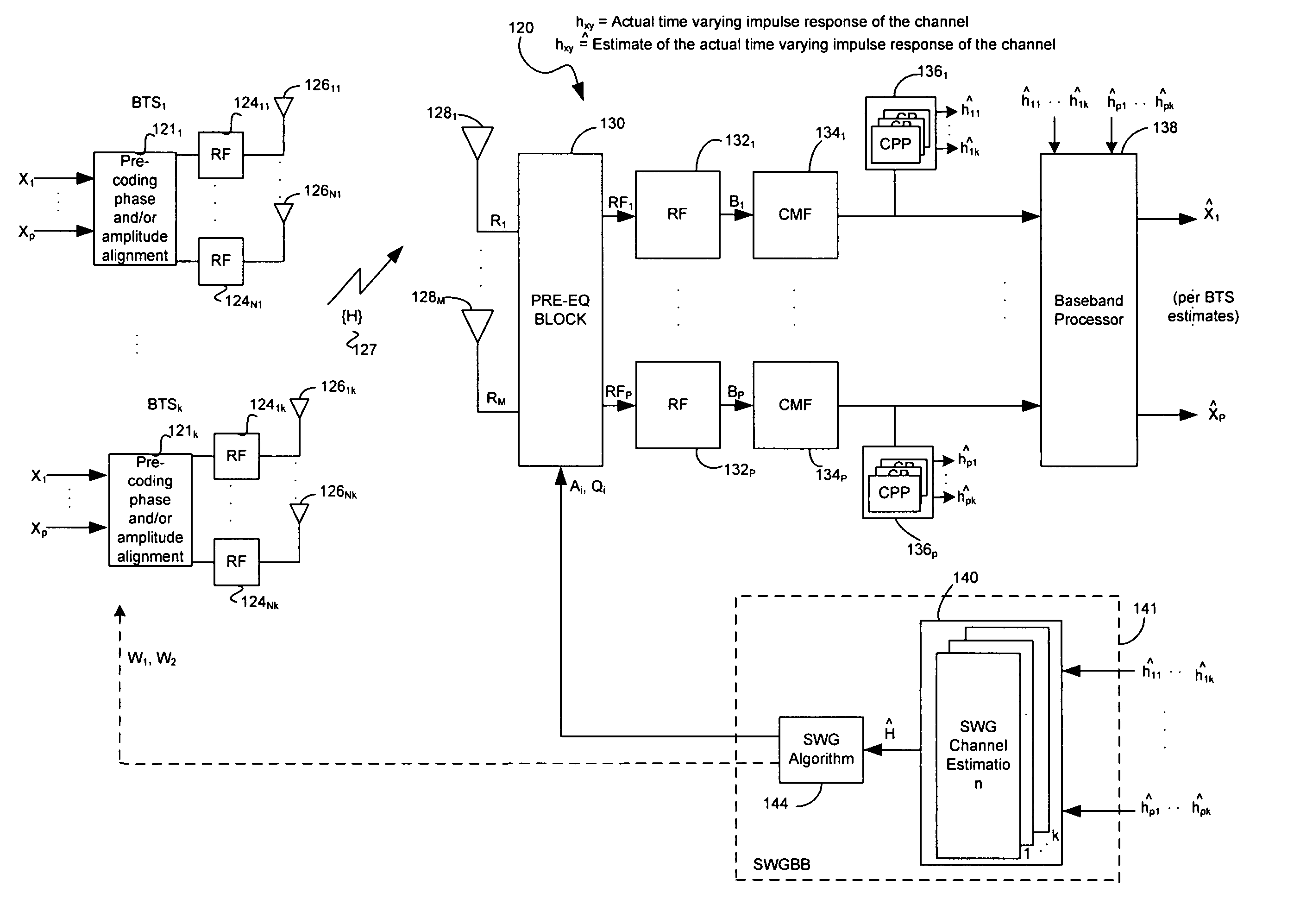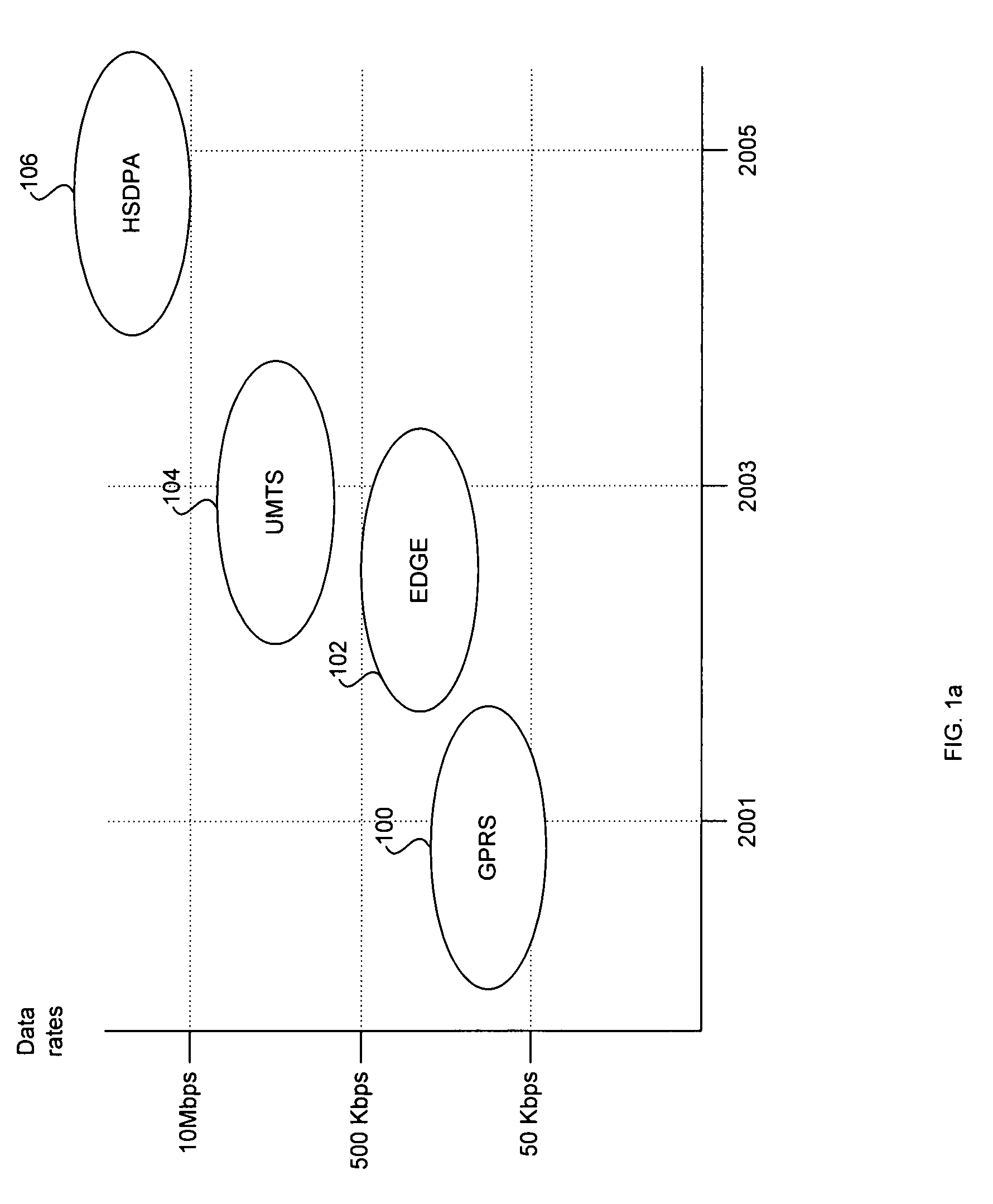Method and system for single weight (SW) antenna system for spatial multiplexing (SM) MIMO system for WCDMA/HSDPA
a technology of spatial multiplexing and antenna system, applied in the field of receiving radio frequency (rf) signals, can solve the problems of wcdma/hsdpa implementation advanced wireless technologies such as hsdpa and/or multiple access interference, performance degradation, inter-cell and intra-cell interference, etc., and achieve the effect of low delay link adaptation
- Summary
- Abstract
- Description
- Claims
- Application Information
AI Technical Summary
Benefits of technology
Problems solved by technology
Method used
Image
Examples
Embodiment Construction
[0053] Certain embodiments of the invention may be found in a method and system for single weight (SW) antenna system for spatial multiplexing (SM) multiple-input multiple-output (MIMO) system for WCDMA / HSDPA. In accordance with an exemplary aspect of the invention, a spatially multiplexed multipath signal may be received via M receive antennas. A single weight generator baseband processor may be utilized to generate a plurality of control signals, or weights, which may be utilized by (M-1) phase shifters to adjust phase and / or amplitude for a plurality of data streams of the received spatially multiplexed multipath signal. Furthermore, the signal weight generator baseband processor may also generate control signals, which may be utilized for phase and / or amplitude adjustment during diversity mode of transmit processing of one or more spatially multiplexed WCDMA or HSDPA signals.
[0054]FIG. 1b illustrates an exemplary HSDPA distributed architecture that achieves low delay link adapt...
PUM
 Login to View More
Login to View More Abstract
Description
Claims
Application Information
 Login to View More
Login to View More - R&D
- Intellectual Property
- Life Sciences
- Materials
- Tech Scout
- Unparalleled Data Quality
- Higher Quality Content
- 60% Fewer Hallucinations
Browse by: Latest US Patents, China's latest patents, Technical Efficacy Thesaurus, Application Domain, Technology Topic, Popular Technical Reports.
© 2025 PatSnap. All rights reserved.Legal|Privacy policy|Modern Slavery Act Transparency Statement|Sitemap|About US| Contact US: help@patsnap.com



